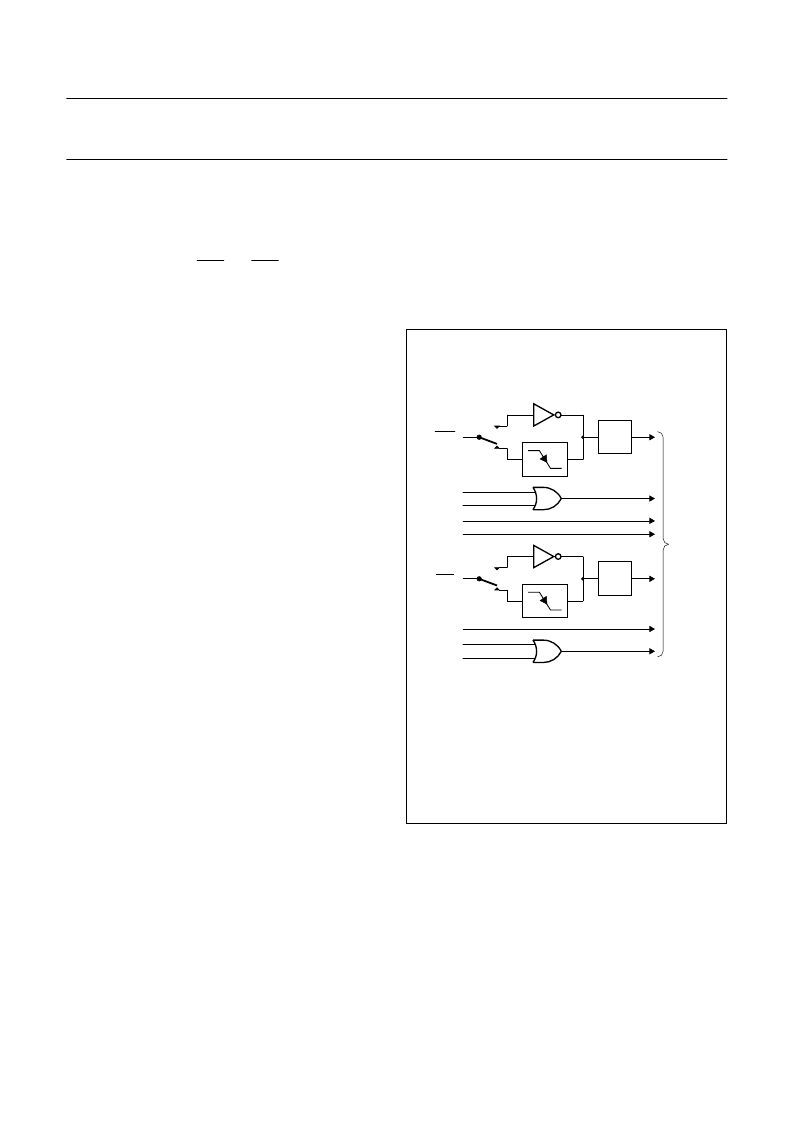- 您現(xiàn)在的位置:買(mǎi)賣(mài)IC網(wǎng) > PDF目錄369944 > P83C524IFP (NXP SEMICONDUCTORS) 8-bit microcontrollers PDF資料下載
參數(shù)資料
| 型號(hào): | P83C524IFP |
| 廠(chǎng)商: | NXP SEMICONDUCTORS |
| 元件分類(lèi): | 微控制器/微處理器 |
| 英文描述: | 8-bit microcontrollers |
| 中文描述: | 8-BIT, MROM, 24 MHz, MICROCONTROLLER, PDIP40 |
| 封裝: | 0.600 INCH, PLASTIC, DIP-40 |
| 文件頁(yè)數(shù): | 37/76頁(yè) |
| 文件大小: | 400K |
| 代理商: | P83C524IFP |
第1頁(yè)第2頁(yè)第3頁(yè)第4頁(yè)第5頁(yè)第6頁(yè)第7頁(yè)第8頁(yè)第9頁(yè)第10頁(yè)第11頁(yè)第12頁(yè)第13頁(yè)第14頁(yè)第15頁(yè)第16頁(yè)第17頁(yè)第18頁(yè)第19頁(yè)第20頁(yè)第21頁(yè)第22頁(yè)第23頁(yè)第24頁(yè)第25頁(yè)第26頁(yè)第27頁(yè)第28頁(yè)第29頁(yè)第30頁(yè)第31頁(yè)第32頁(yè)第33頁(yè)第34頁(yè)第35頁(yè)第36頁(yè)當(dāng)前第37頁(yè)第38頁(yè)第39頁(yè)第40頁(yè)第41頁(yè)第42頁(yè)第43頁(yè)第44頁(yè)第45頁(yè)第46頁(yè)第47頁(yè)第48頁(yè)第49頁(yè)第50頁(yè)第51頁(yè)第52頁(yè)第53頁(yè)第54頁(yè)第55頁(yè)第56頁(yè)第57頁(yè)第58頁(yè)第59頁(yè)第60頁(yè)第61頁(yè)第62頁(yè)第63頁(yè)第64頁(yè)第65頁(yè)第66頁(yè)第67頁(yè)第68頁(yè)第69頁(yè)第70頁(yè)第71頁(yè)第72頁(yè)第73頁(yè)第74頁(yè)第75頁(yè)第76頁(yè)

1997 Dec 15
37
Philips Semiconductors
Product specification
8-bit microcontrollers
P83C524; P80C528; P83C528
14 INTERRUPT SYSTEM
The P83C528 contains the same interrupt structure as the
PCB80C51BH, but with a seven-source interrupt structure
with two priority levels (see Fig.19).
The External Interrupts INT0 and INT1 can each be either
level-activated or transition-activated, depending on bits
IT0 and IT1 in TCON SFR. The flags that actually generate
these interrupts are bits IE0 and IE1 in TCON. When an
external interrupt is generated, the corresponding request
flag is cleared by the hardware when the service routine is
vectored to, only if the interrupt was transition-activated. If
the interrupt was level-activated then the interrupt request
flag remains set until the external interrupt pin INTx goes
high.
The Timer 0 and Timer 1 Interrupts are generated by TF0
and TF1, which are set by a rollover in their respective
timer/counter register (except for Timer 0 in Mode 3 of the
serial interface). When a Timer interrupt is generated, the
flag that generated it is cleared by the on-chip hardware
when the service routine is vectored to.
The Serial Port Interrupt is generated by the logical 'OR' of
RI and TI. Neither of these flags is cleared by hardware.
The service routine will normally have to determine
whether it was RI or TI that generated the interrupt, and the
bit will have to be cleared by software.
The Timer 2 Interrupt is generated by the logical OR of TF2
and EXF2. Neither of these flags is cleared by hardware.
In fact the service routine may have to determine whether
it was TF2 or EXF2 that generated the interrupt, and the bit
will have to be cleared by software.
An additional (third) external interrupt is available, if Timer
2 is not used as timer/counter or if Timer 2 is used in baud
rate generator mode. That external interrupt 2 is falling
edge triggered. It shares the Timer 2 interrupt vector,
interrupt enable and interrupt priority bits. If bit
T2CON.3/EXEN2 = 1, a HIGH-to-LOW transition at pin
P1.1/T2EX sets the interrupt request flag T2CON.6/EXF2
and can be used to generate an external interrupt.
The I
2
C interrupt is generated by SI in S1INT. This flag has
to be cleared by software. All of the bits that generate
interrupts can be set or cleared by software, with the same
result as though they had been set or cleared by hardware,
with the exception of the I
2
C interrupt request flag SI,
which cannot be set by software. That is, interrupts can be
generated or pending interrupts can be cancelled in
software.
Fig.19 P83C528 Interrupt Sources.
handbook, halfpage
MBC481 - 1
IE1
0
1
IE0
0
1
interrupt
sources
INT0
TF2
EXF2
SI
TF0
INT1
TF1
TI
RI
相關(guān)PDF資料 |
PDF描述 |
|---|---|
| P83C524IBP | 8-bit microcontrollers |
| P83C524 | 8-bit microcontrollers |
| P83C524EBA | 8-bit microcontrollers |
| P83C524EBB | 8-bit microcontrollers |
| P83C524EBP | 8-bit microcontrollers |
相關(guān)代理商/技術(shù)參數(shù) |
參數(shù)描述 |
|---|---|
| P83C528 | 制造商:PHILIPS 制造商全稱(chēng):NXP Semiconductors 功能描述:8-bit microcontrollers |
| P83C528BBA | 制造商:未知廠(chǎng)家 制造商全稱(chēng):未知廠(chǎng)家 功能描述:8-Bit Microcontroller |
| P83C528BBP | 制造商:未知廠(chǎng)家 制造商全稱(chēng):未知廠(chǎng)家 功能描述:8-Bit Microcontroller |
| P83C528BHA | 制造商:未知廠(chǎng)家 制造商全稱(chēng):未知廠(chǎng)家 功能描述:8-Bit Microcontroller |
| P83C528BHP | 制造商:未知廠(chǎng)家 制造商全稱(chēng):未知廠(chǎng)家 功能描述:8-Bit Microcontroller |
發(fā)布緊急采購(gòu),3分鐘左右您將得到回復(fù)。